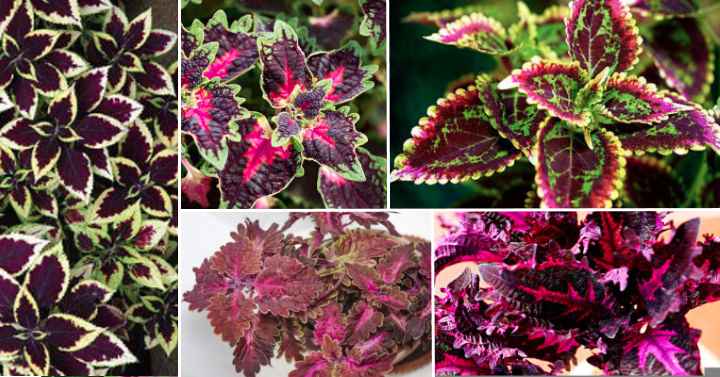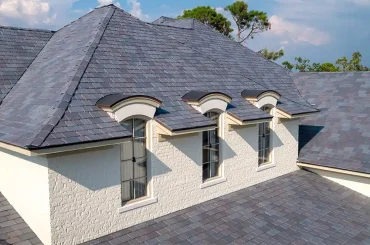Table of Contents
Do you want to make your home space more colourful and lively? Purple-leafed houseplants are a great place to start! The shapes, sizes and purple hues of these distinctive and attractive plants are varied. They not only enhance the aesthetic appeal of any space, but they also have a host of health advantages, including better air quality and reduction in stress.
In this article, we have compiled 20 different houseplants with attractive purple leaves that will stand out in your home. Make sure the purple leaf plant you select can flourish in the environment and lighting of your home. Like if you reside in a warm and sunny climate, your plant should withstand a lot of sunshine, but if you reside in a colder area, then going for a plant which can thrive in low light will be best.
For ideas on how to grow these gorgeous plants in your home, whether you are an experienced plant parent or just getting started with your green adventure, keep reading.
1. Dottie
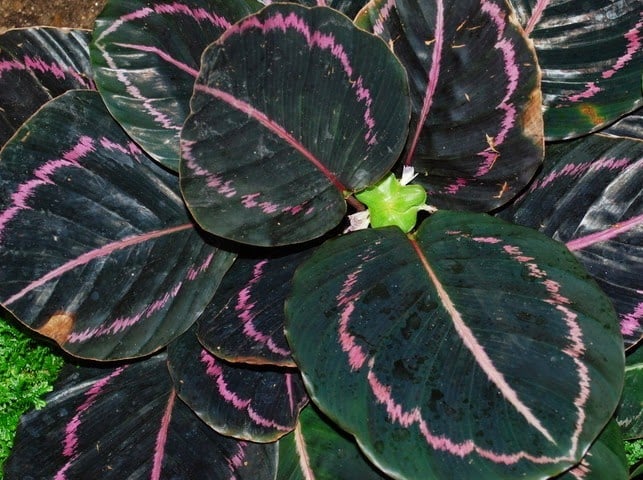
This Brazillian native purple leaf plant opens up to the sky. A deep purple colour may be seen on their underside, which is more noticeable at night as they close in on themselves. The topmost side has leaves that are sharply veined in dark green with a brilliant pink heart. Because of its tropical heritage, Dottie needs bright but indirect sunshine, so pick a windowsill in a suitable area; the darker leaves, the more UV it will need. It needs continuous moisture but mocks moist soil, so water it frequently but lightly.
2. Purple Pearl
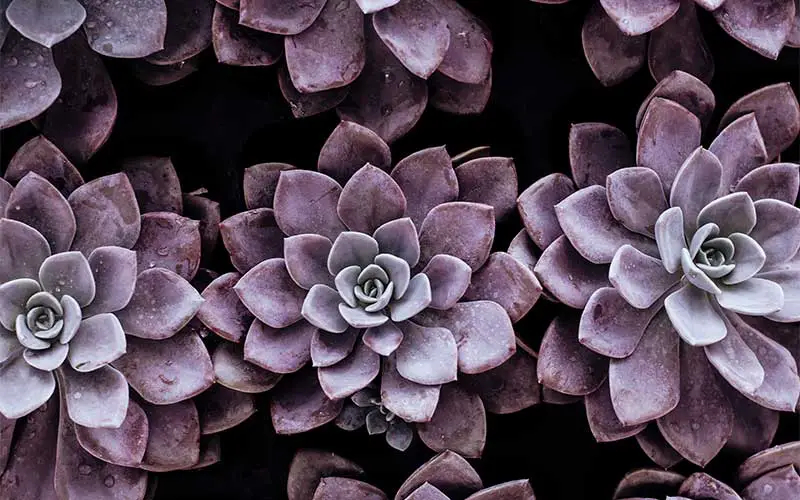
Purple pearl is a sight to behold with its compact fleshy leaves and gently purple tones, especially in the spring when the petite coral-coloured blossoms add to the rest of its visual palette. This purple leaf plant prefers full sun, can’t tolerate cold temperatures, and like other succulents, prefers full sun. To get the most out of it, soak it properly and let it dry completely. It is a stunningly attractive yet small houseplant to add to your collection, with a height limit of 30 cm.
3. Moses in The Cradle
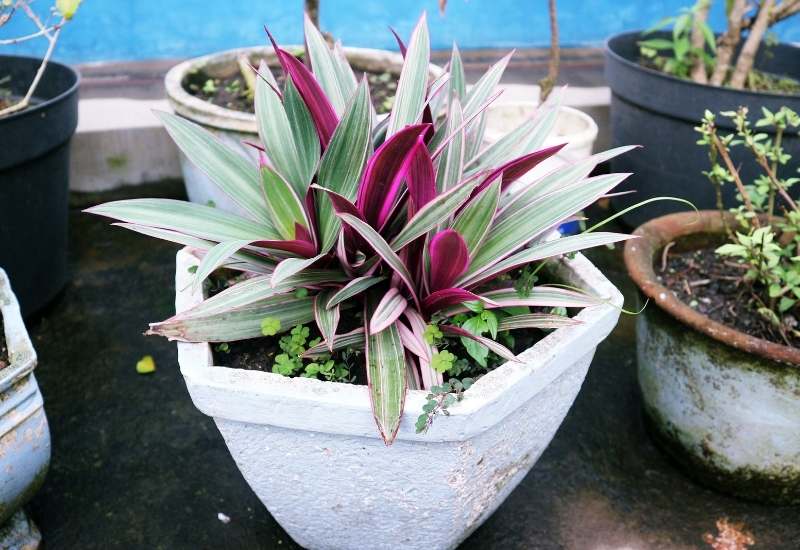
The Moses in the cradle plant, also known as boat lily, has an arrangement of lance-shaped leaves with green and white strips on the top and a pop of bright purple on the underside. This purple-leaf plant blooms with tiny pink or white flower clusters and rarely grows taller than 30 cm. They are widely grown indoors as houseplants, even though they are grown abundantly outdoors in warmer climates. Their ability to bloom throughout the year makes them most favoured among the others.
4. African Violet
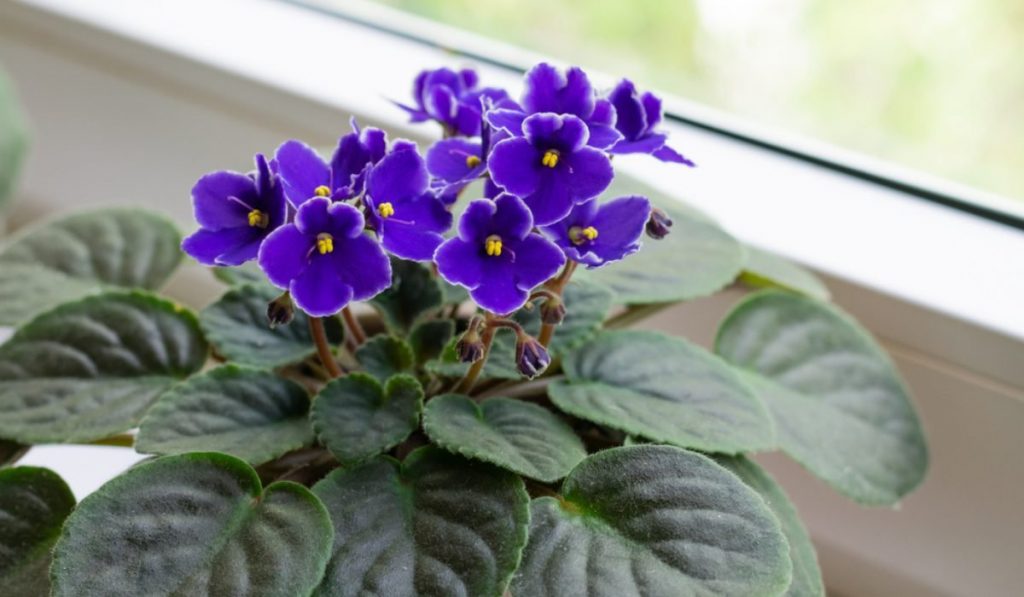
African violets are considered to be a bit tricky to grow because they are indigenous to the humid regions of East Africa. However, if exposed to perfect circumstances, these purple-leaf plants will flourish and do well throughout the year. These plants have an array of vibrant, mixed flowers that bud in hundreds of colour shades, including varied hues of purple. When you master growing these lovelies, you won’t want to quit.
5. Purple Passion
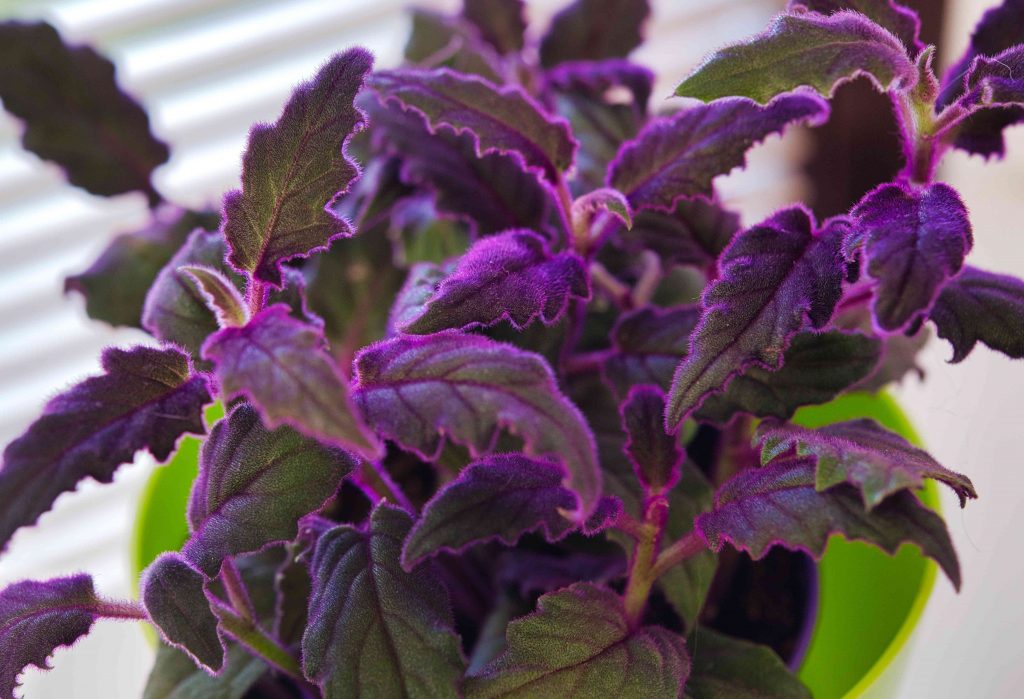
Purple passion or velvet plant is a member of the daisy family. It is best known for its glossy, bright purple fuzz-coated deep green leaves. This vine plant is a wonderful addition to any room if you are looking for a subtler touch of purple. In any climate, this purple leaf plant is easy to grow indoors. All to need to remember is to keep it well watered, but don’t overwater it because root rot is a serious concern. Purple Passion’s long velvety leaves dangle over the side of the containers, making it a great display option.
6. Purple Shamrock
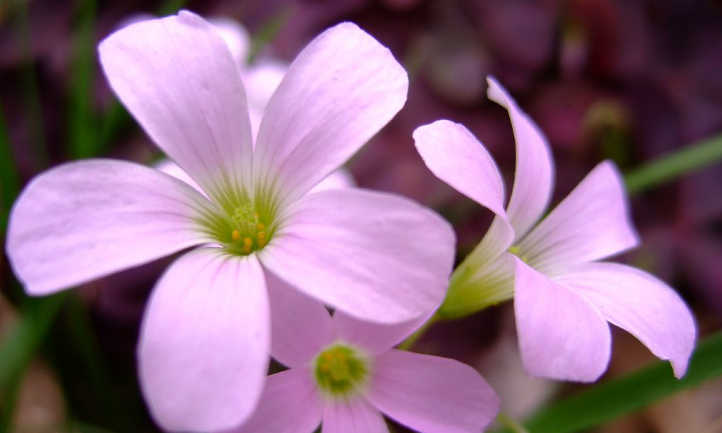
The name of this beautiful perennial comes from the three triangular leaves that adorn each stem. Its purple foliage, which has an extremely dark colour and is practically black, will offer an eye-catching component to your indoor design. These dark hues are beautifully contrasted by the flowering plant’s white or lavender blossoms, which can occur pretty much at any time of the year. You can count on this beauty to elevate the aesthetics of your space to the next level.
7. Vanda Orchids
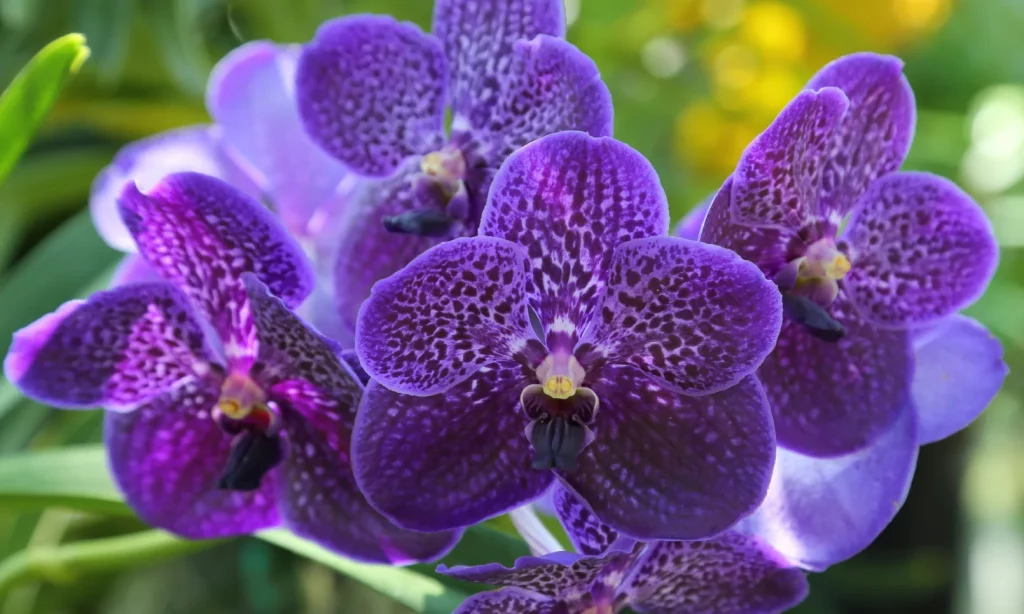
About 80 kinds of orchids belong to the genus Vanda, and its gorgeous blooms come in almost every colour of the spectrum. Many of the Vanda orchid species include Vanda coerulea, Vanda pachara, Vanda sansai blue, Vanda mokara, and Vanda Robert’s delight, to name a few. These produce fragrant stalks of checked flowers in hues of violet and indigo, making them visually appealing purple-leaf houseplants to add to your home.
8. Persian Sheild
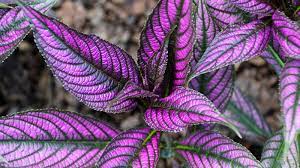
The Persian shield is an evergreen purple-leaf plant. Its most alluring feature is its purple leaf. These plants exhibit thick, green foliage that is capped with purple metallic pinwheels, which even resemble the shades of a peacock’s feather. Give it what it needs, which is a lot of sunlight, warmth and water and in return, it will shine as long as possible. Their leaves remain vibrant and lively when they are young, but as they age, you can expect them to turn dull and mushy.
9. Purple Succulents
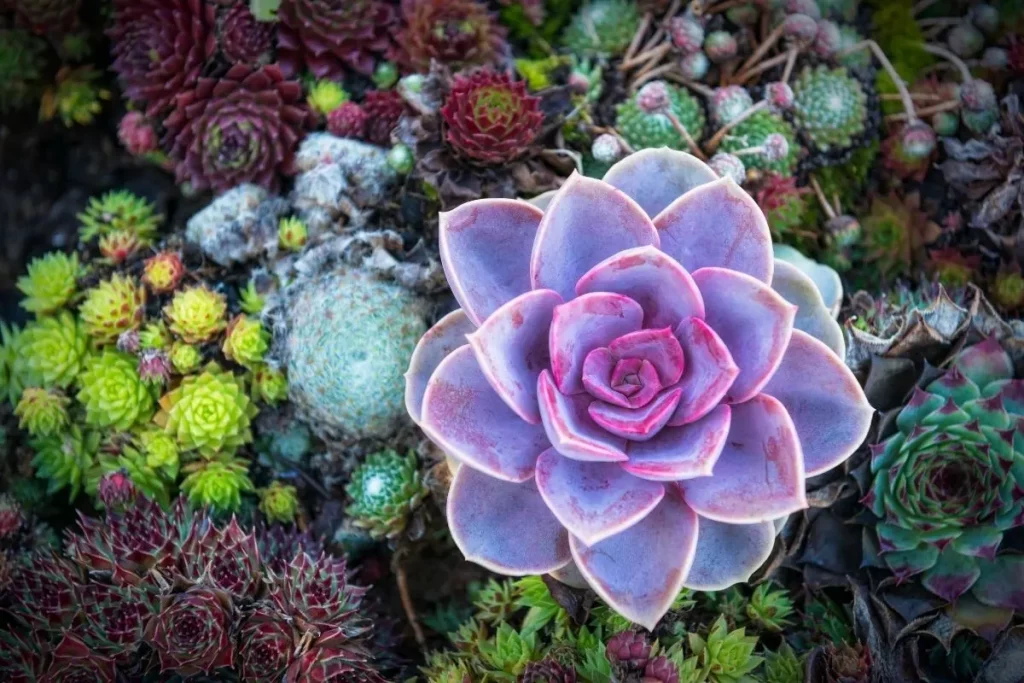
Purple leaf plant – Echeveria, or purple succulents, is comprised of approximately 150 species of rosette-shaped succulents. The colour, leaf shape, size and texture of these plants vary depending on the particular species but are equally stunning and enjoyable to collect. The purple hues of these houseplants range from dusty lavender to a deep and almost black purple. It is adaptable to most soil types and will grow just as well in both full sun and shade. This purple-leaf houseplant is easy to take care of because its watering requirements are reasonable.
10. Painted Nettle
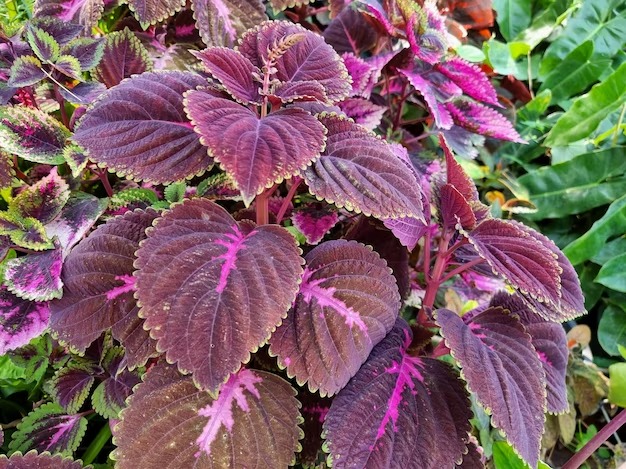
There are practically infinite variations of painted nettles. The foliage, which has velvety leaves that are delightful to the touch and a wide range of variegated colours and patterns, is what draws attention to this plant, even though it does grow flowers. For optimal effects, place your purple leaf in full sunlight; otherwise, its leaves will start to lose their colour. Maintaining the health and happiness of your specimen requires frequent pruning, equal watering, and good soil aeration.
11. Purple Emperor
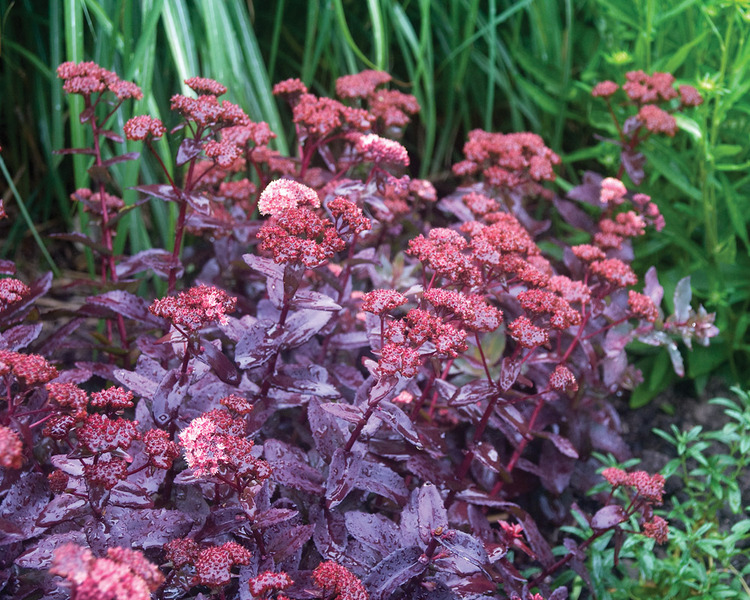
The sedum family, popularly known as stonecrops because of their tendency to flourish in rocky, pebbly soils, includes the “Purple Emperor”. With its dark purple, almost black leaves, towering stems, and tiny clusters of bright pink blooms, this particular species is one of the most distinctive. This purple leaf plant will thrive in both indoor and outdoor environments, although in both, they love rocky or sandy soil. To achieve full establishment, you can water them more frequently in the first year. However, after that, they will need less watering often.
12. Purple-Heart Spiderwort
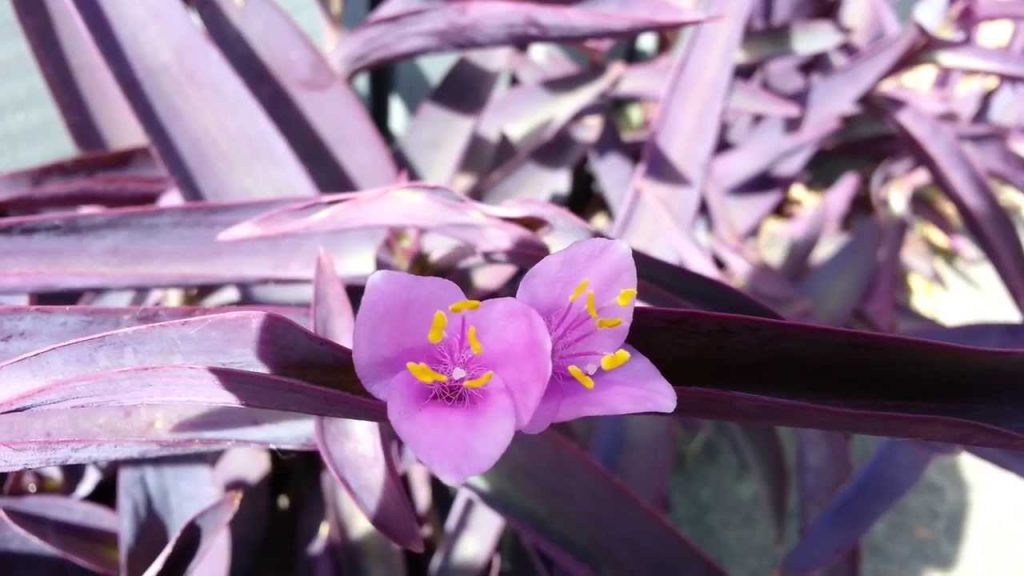
The vivid maroon hues of “Purple Heart” can be seen on both its stems and its narrow, cupped leaves. The foliage of this purple-leaf plant is the star of the show, even though it does produce singularly gorgeous clusters of blooms in a wide range of pinky-purple hues. This plant will live without requiring much attention because it is a drought-tolerant species. Purple Heart’s lush leaves are particularly noteworthy, and they appear especially lovely when they fall over the edge of an upside-down basket.
13. Hawaiian Ti Plant
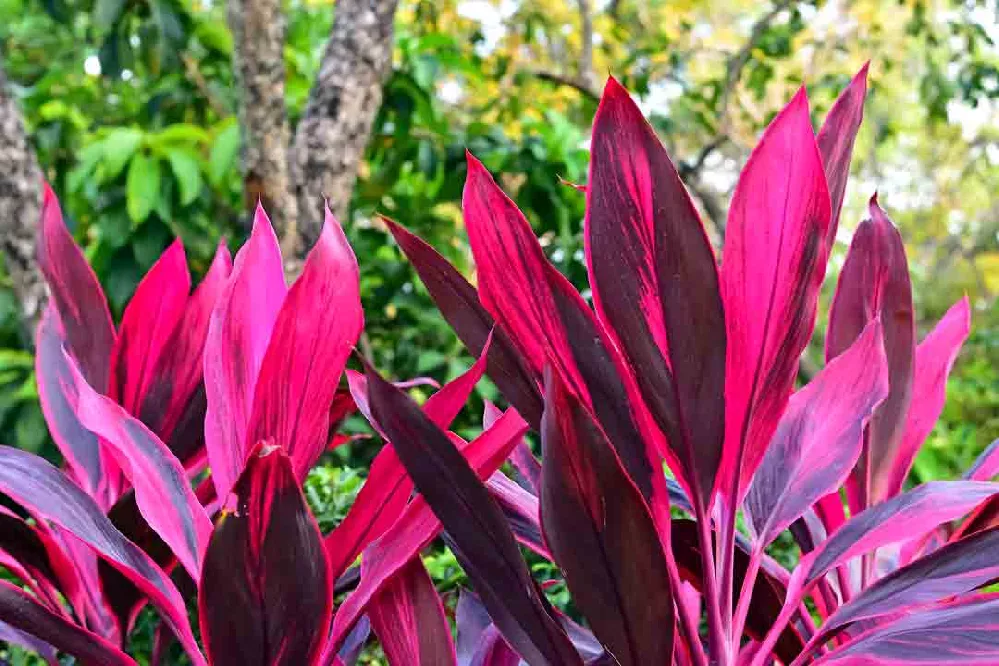
The Hawaiian Ti plant is presumed to bring luck. It’s also popular as a houseplant due to its lovely, beautiful leaves and is planted for religious and medicinal purposes. The sword-shaped leaves of the Ti plant grow vertically along a central stalk and are stunningly coloured in hues that range from fuchsia to a deep purplish-red. This purple leaf plant has purple, pink and white blooms. During the growing season, irrigate often with tepid, filtered water to keep the soil consistently moist. Don’t splatter the leaves. Reduce usage in the autumn and winter.
14. Split Rock
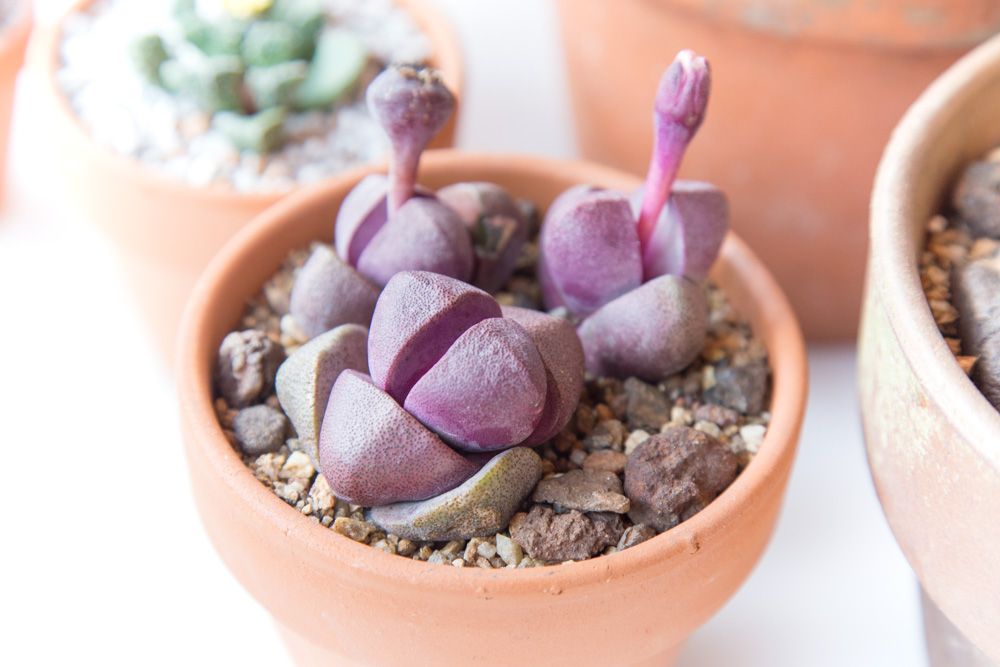
It’s apparent why split rock is a more popular name for the “Royal Flush” plant. With each new year, a fresh pair of leaves appear on the foliage of this unusual succulent, which resembles two sides of a little rock that has been split in half. Wondering why it should grab a place in your home? So, folks, it is because early spring witnesses a bloom of a daisy-like flower on top of everything, bringing pink, yellow, and white hues to the purplish background below. Along with lots of light and little watering, this purple leaf plant needs excellent drainage and ventilation too.
15. Tiger Stripes
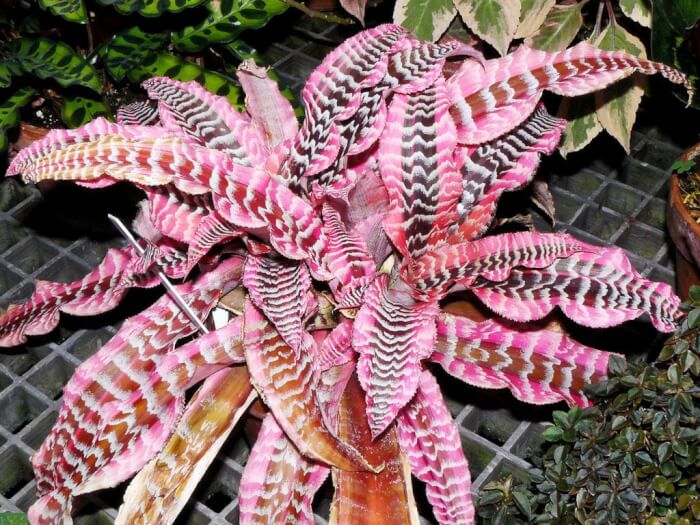
As the name suggests, “Tiger Stripes” has broad, round leaves with a tiger-striped pattern on them. During the summer, it also gets purple-green blooms, but these are smaller and less striking than their stunning leaves. This purple-leaf plant which can grow to about 1m tall, needs consistent warmth and at least six hours of sunlight each day. The best part of this plant is although, during the summer, regular watering is beneficial, during the winter, too, it can resist forgetfulness and negligence.
16. Jaw Plant
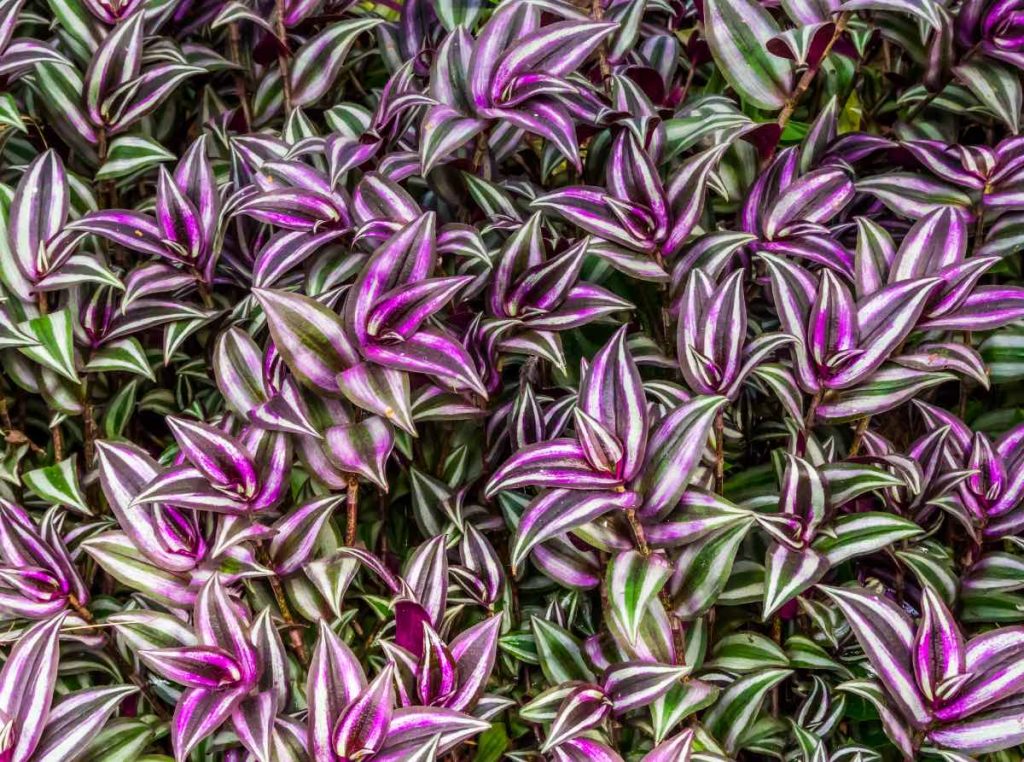
The jaw plant is often regarded as disruptive. Wondering why? It is because of its ability to grow and spread rapidly. The aggressive growth pattern of this purple-leaf plant prevents other plants from growing and disrupts the natural ecosystem. But because of its quick growth, you may use it as a trailing houseplant inside your home, where its amazing zebra-patterned leaves will flow over the sides of the container. You may wish to cut it back to keep it under control because if left to grow on its own, it can grow to a height of more than 80cm.
17. Bellflower
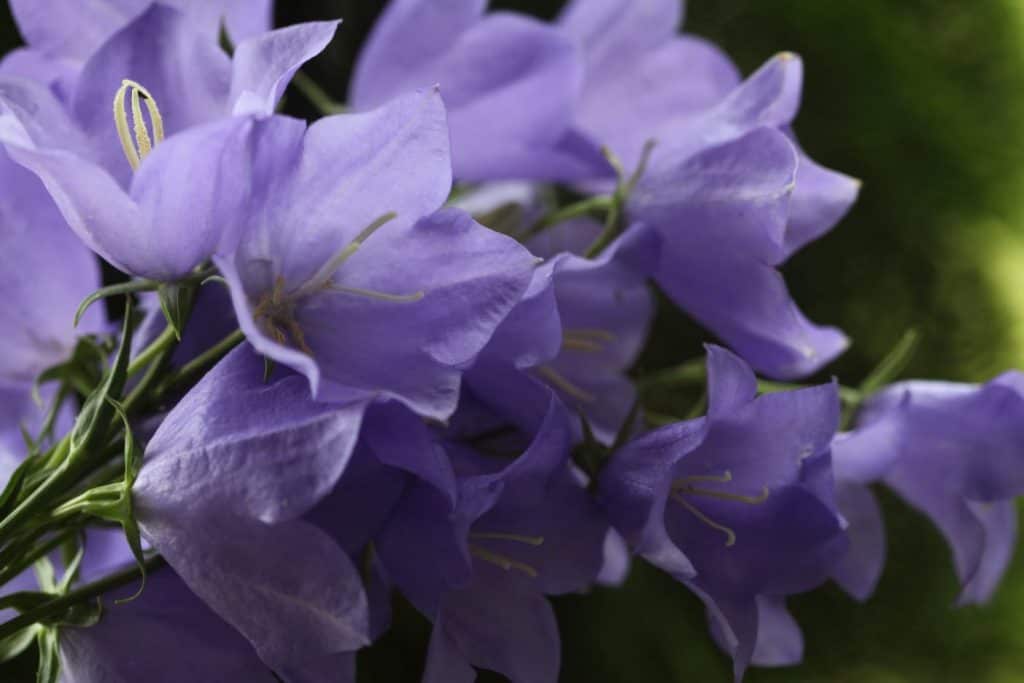
Bellflower refers to a genus of flowering plants that is so named because of the traditional-shaped petals on its purplish-blue flowers. With more than 500 species, subspecies, and hybrid cultivars in this genus, bellflowers are one of the most diverse flower families. This purple-leaf plant is frequently grown outdoors as a colourful, emerald-green ground cover. However, you can successfully cultivate them indoors as it looks nice when planted in containers. Remember to spray water when the top inch or two of the soil begins to dry up so you can keep uniformly damp soil with proper drainage.
18. PinkQuill
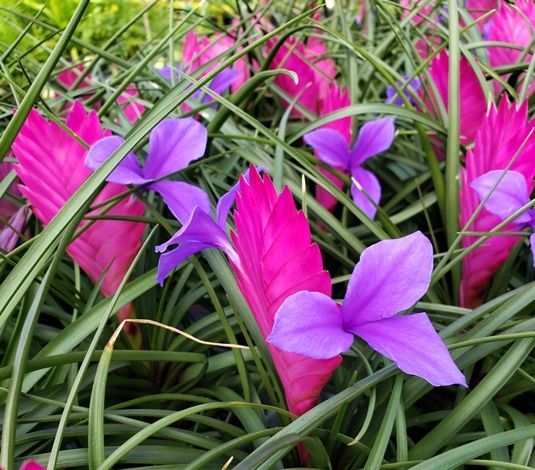
Pink Quill carries gorgeous, light-pink petals that resemble feathers or quills, which are covered in purple flowers. These rare purple-leaf plants will bring something unique to any indoor garden setting or serve as an exclusive living decor element. Maintain consistent moisture in the soil. In between waterings, ensure that the plant doesn’t dry out, but keep the soil from becoming soggy. So if you wish to add something unique to your garden or want to create a contrast with purple hues, this is a great option for you to try.
19. Aechme
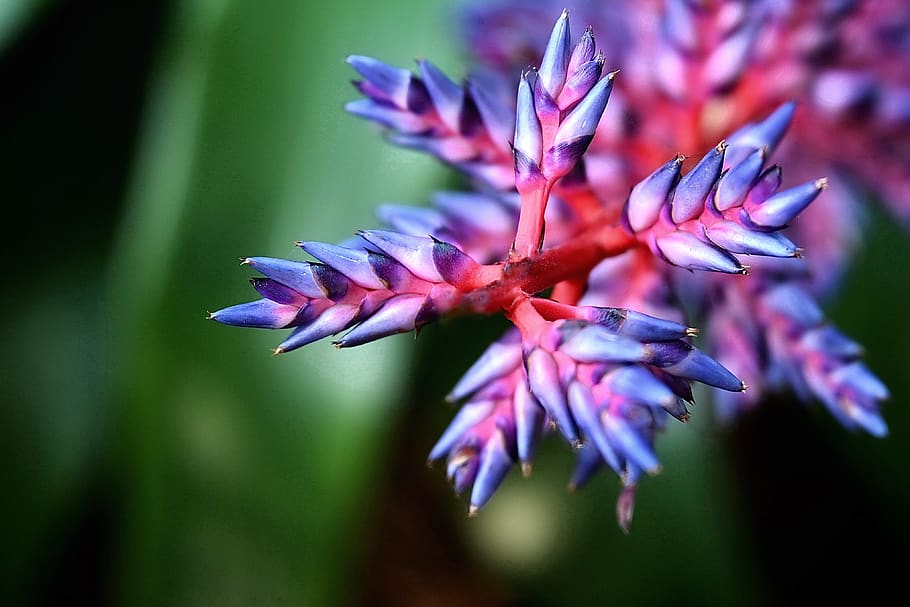
You would be surprised to know about 250 species of blooming tropical plants fall within the genus Aechmea. They develop on trees rather than in-ground soil. With the appropriate potting mix, they can still be grown indoors. Every purple-leaf plant has a tropical appearance and fascinating colours. The Aechmea, or ‘Blue Rain’, in particular, is a hybrid with a surprisingly lovely core blooming spike of flaming red and brilliant violet flowers. Thereby, turns out to be a beautiful purple indoor plant.
20. Christmas Cactus
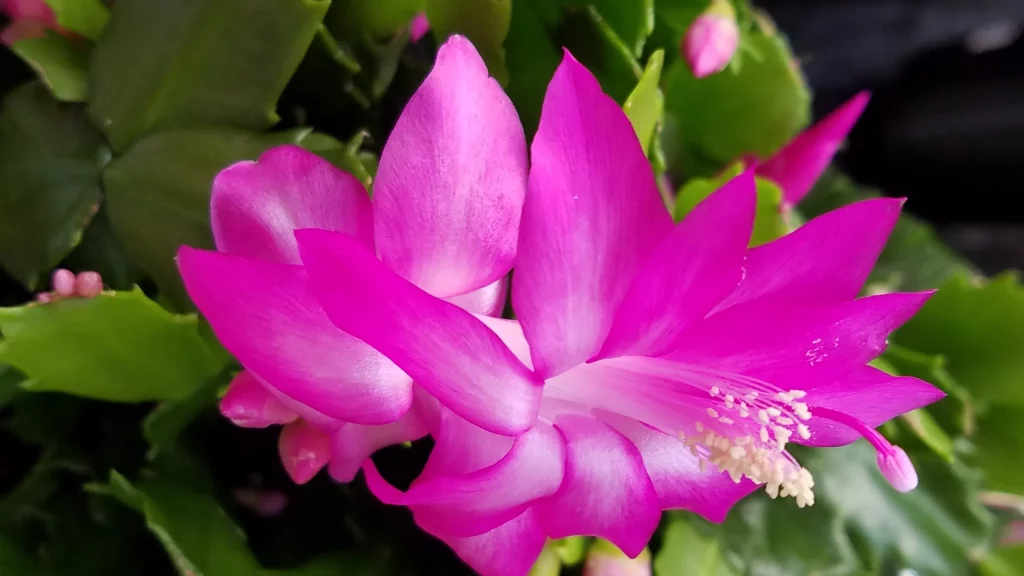
Christmas Cactus emerge from tree bark and rocky outcrops, much like orchids. They bloom with exquisitely delicate tubular flowers in a variety of colours, including a fuchsia-purple hue, and have intriguing segments of pad-like “leaves” on them. This purple-leaf plant is flavoured as it is not only easy to grow but also requires less maintenance. Remember, when the soil is about to dry, water it properly and let the extra water drain.
How to Care for Purple Leaf Plants
Indoor plants with purple foliage are one of the most common and long-lasting houseplants. If you want to relish their beauty, you need to take special care of these special plants. Follow the below-mentioned tips to help you grow healthy purple-leaf plants:
- Make sure your plant receives the required sunshine
- Feed them with a balanced fertilizer at least once a week
- Water them regularly, especially during summers
- Handle with care to avoid any breakage.
Summing Up
Well, we have looked at 20 indoor plants with purple foliage in this article. You might be familiar with some of these earlier, and some might be new to you. We bet by now you have fallen in love with them! Hope this article has given you some ideas for bringing a little colour and life into your home without you stepping out f your home and regardless of your knowledge of purple-leaf plants.
These houseplants with purple leaves can add colour and brightness to your space. These unique and lovely plants come in different shapes, sizes and purple tones. They have significant aesthetic value in addition to their various health benefits, like improving air quality and reducing stress. Having all the knowledge on different purple leaf plants, you might be getting a little eager to plant them.
Don’t worry won’t take much of your time any longer. You can start planting your favourite plant and elevate the aesthetics of your space!

